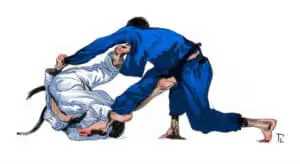You are thinking of starting BJJ or may have just taken your first couple of classes and are now wondering how long does it take to become an expert at BJJ and attain the mythical Black Belt.
How Long Does It Take To Get A Black Belt In Brazilian Jiu Jitsu (BJJ)? Traditionally it would take someone approximately 10 years of consistent training to get a Black Belt in BJJ. Nowadays a Black Belt can be achieved in 5-8 years if the student trains a lot and is dedicated. There are outliers such as BJ Penn who received their BJJ Black Belt in 3 years but I would say the average time to reach Black Belt has reduced to around 7 years. A person can now earn a Black Belt quicker than in the past due to better coaching, more competitions, more training resources such as DVD instructionals, higher number of gyms with higher number of training sessions.
In the past a dedicated student may have only been able to train 3 times a week , compete once every couple of months and would only be able to train with a small handful of people. Now an athlete can train twice a day, compete multiple times a month and train with hundreds of different people resulting in much faster progression.
Why Does It Take So Long (10 Years) To Get A Black Belt In Brazilian Jiu Jitsu (BJJ)?
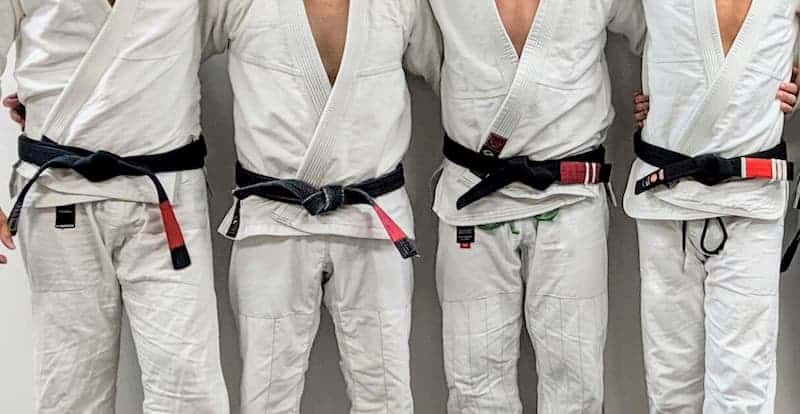
A Black Belt in BJJ represents mastery. It denotes an individual who is an expert in the art, can perform a wide array of the techniques fluidly against resistance and is capable of teaching the martial art to a high level. To reach this skill level requires significant amounts of time and dedication. This is why it often takes individuals up to 10 years to get their BJJ Balck Belt.
The definition of a Black Belt in BJJ is different to many other martial arts. In Judo a Black Belt is an individual who has a good grasp of the fundamentals and can be expected to perform the techniques in a competent manner. This is why a Judo Black Belt in Japan can be achieved in 1-2 years. It isn’t that BJJ is more difficult to learn than Judo or has much stricter conditions to becoming a Black Belt it is the fact that they are viewed as two different things. In Judo in many western countries the governing bodies have moved away from the traditional Japanese definition of a Black Belt and have begun defining a Black Belt as a master similar to BJJ. This is why it can now take someone training Judo in America 4-6 years to get a Black Belt.
How Many BJJ Black Belts Are There In The World?
The International Brazilian Jiu Jitsu Federation (IBJJF) currently has 3800 Black Belts registered. However very few Black Belts are officially registered. In my gym there are 25 Black Belts and only 2 are registered with IBJJF. If we estimate 5% of BJJ Black Belts are registered that means there are approximately 76,000 Black Belts in the world. I think it is safe to assume there are more than 50,000 but not more than 150,000 BJJ Black Belts in the world.
What Is The Highest Belt In BJJ?
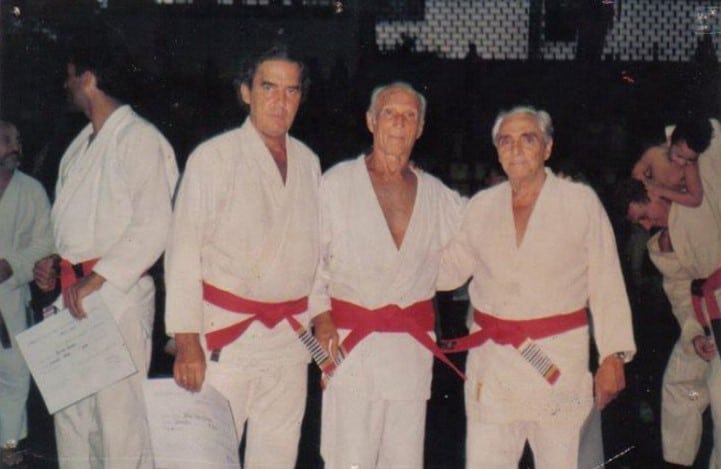
You may have assumed that Black Belt is the highest rank in BJJ. In fact there are 3 belts higher than Black Belt. The first belt after Black Belt is the Red/Black Belt (Coral Belt) also known as a 7th degree Black Belt, which is awarded after an individual has been an active Black Belt for over 30 years. Royce Gracie is a Red/Black Belt (Coral Belt). The next belt is a 8th degree Black Belt or a Red/White Belt (Coral Belt). Before you can earn this belt you need to be a 7th degree Black Belt for a minimum of 7 years.
The final belt in BJJ is the legendary Red Belt which is usually only given to those who have made a significant contribution to the sport of BJJ after a lifetime of dedication. Renzo and Royler Gracie said a Red Belt should be only given to those “whose influence and fame takes them to the pinnacle of the art”. One can only receive a Red Belt after spending a minimum of 10 years at 8th degree Black Belt. Rickson Gracie was recently awarded a Red Belt.
How Do You Get A BJJ Black Belt?
There are no formal requirements to receive a BJJ Black Belt. If a second degree Black Belt believes you are worthy of being a Belt Belt they can promote you. The IBJJF has established a few requirements such as you must be at least 19 years old and have spent at least one year at Brown Belt (the rank preceding Black Belt). However a Black Belt is not obligated to follow the IBJJF requirements. To avoid the prestige of a BJJ Black Belt being diluted instructors who promote students who are not ready will be chastised and their reputations will be damaged. Instructors do not want to be known as giving out undeserved ranks, this stigma protects the integrity of the BJJ Black Belt.
How Many BJJ Belts Are There?
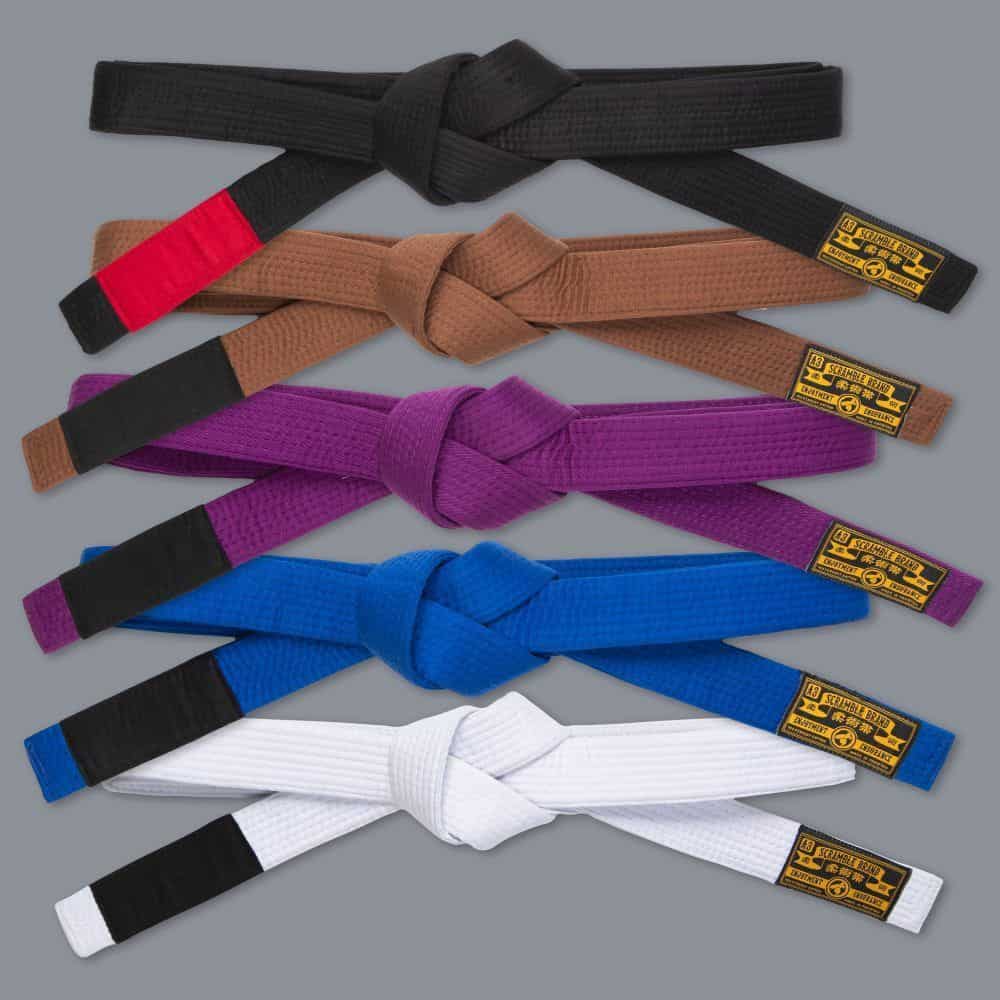
There are 8 BJJ belts for adults. The 5 belts we haven’t discussed are shown below.
White Belt
The beginner rank which all people who start training BJJ receive. Even if you hold a rank in another martial art if you start BJJ you will be a White Belt.
Blue Belt
The first intermediate rank. Typically it takes 1-2 years to receive a Blue Belt. A Blue Belt is someone who has a grasp of the fundamentals. A Blue Belt should be able to control an untrained person who is of a similar size in a fight.
Purple Belt
The second intermediate rank. Typically it takes 4-6 years to reach Purple Belt. A Purple Belt should have an advanced understanding of BJJ and be able to perform all techniques with good technique. A Purple Belt should also be able to teach the basics to beginner students.
Brown Belt
The first advanced rank. Typically it takes 5-8 years to reach Brown Belt. A Brown Belt is an expert who needs a few more years to polish their skills to reach total mastery.
Black Belt
The final practical rank. Typically it takes between 6-10 years to reach Black Belt. A BJJ Black Belt is a master. They can not only perform all techniques with and without resistance but have a deep understanding of why they work and are able to make adjustments to improve techniques. BJJ Black Belts are also expert teachers and are able to take a beginner and turn them into a Black Belt.
What Do Stripes in BJJ Mean?
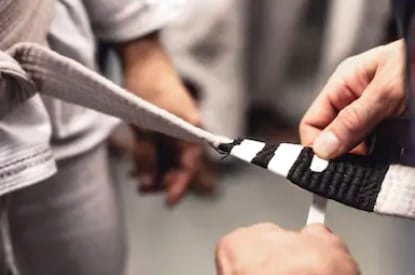
Stripes are an informal way to signify a student’s BJJ progression and ability. For example a 3 stripe White Belt is more advanced than a one stripe White Belt. Stripes are used as a way for instructors to track their student’s progress as at big schools it can be difficult for instructors to closely monitor the progression of all students. As it can take many years to receive belts in BJJ stripes are used as a way to motivate students and celebrate their advancement.
An instructor will often in a mini promotion celebration acknowledge the student’s improvement and then take a piece of tape and attach it to the student’s belt. Not all schools use stripes and they are not a requirement by the IBJJF. In schools that use stripes typically a maximum of 4 will be awarded and once a student has received 4 they are able to be promoted to the next BJJ belt.
The length of time to receive a BJJ Black Belt has decreased from 10 years to around 7 years. This is due to increased ability to train and compete and the improved coaching and learning resources. The journey to BJJ Black Belt is long because a BJJ Black Belt is an expert. Even with the BJJ’s explosion in popularity there are probably less than 100,000 Black Belts in the world.
